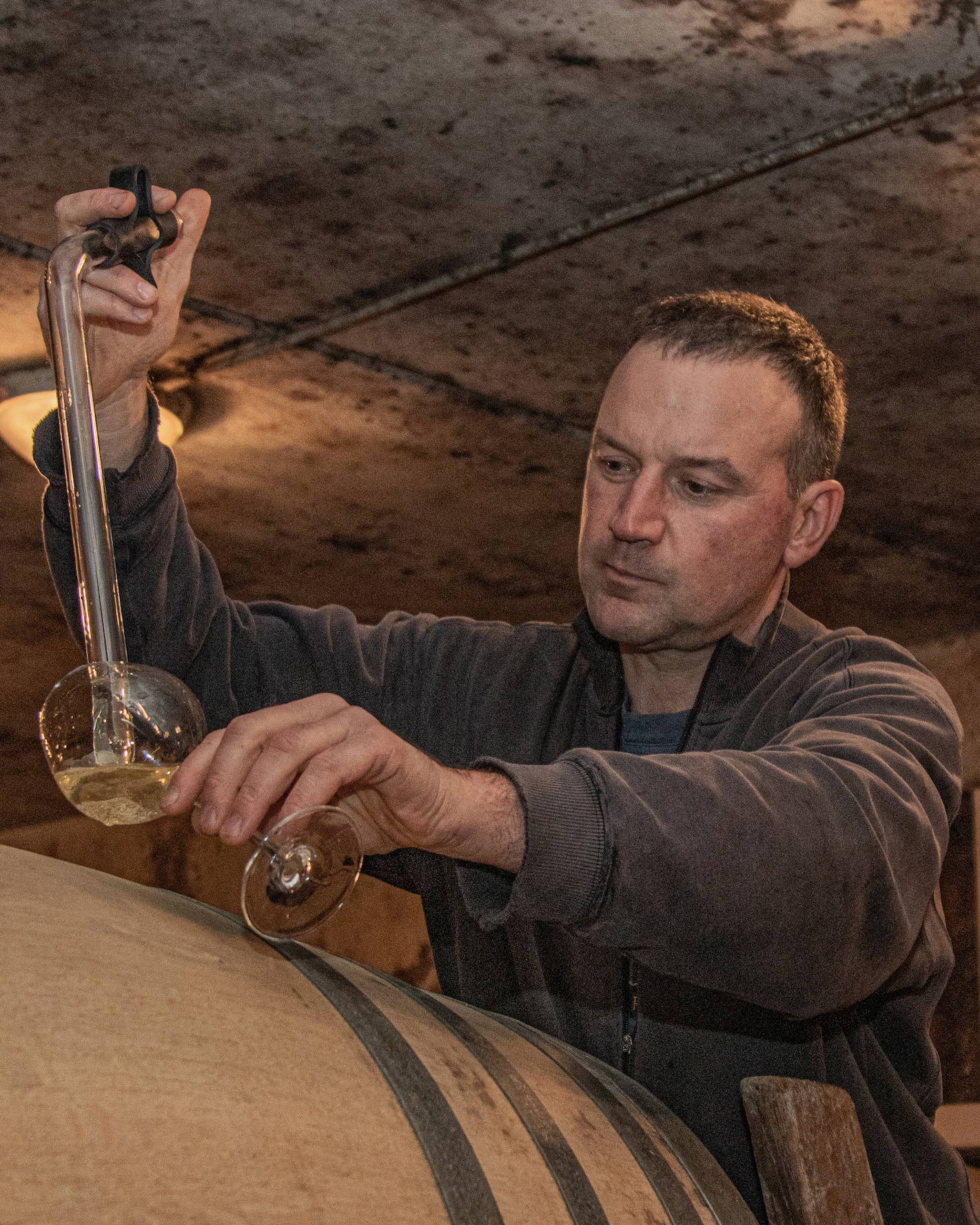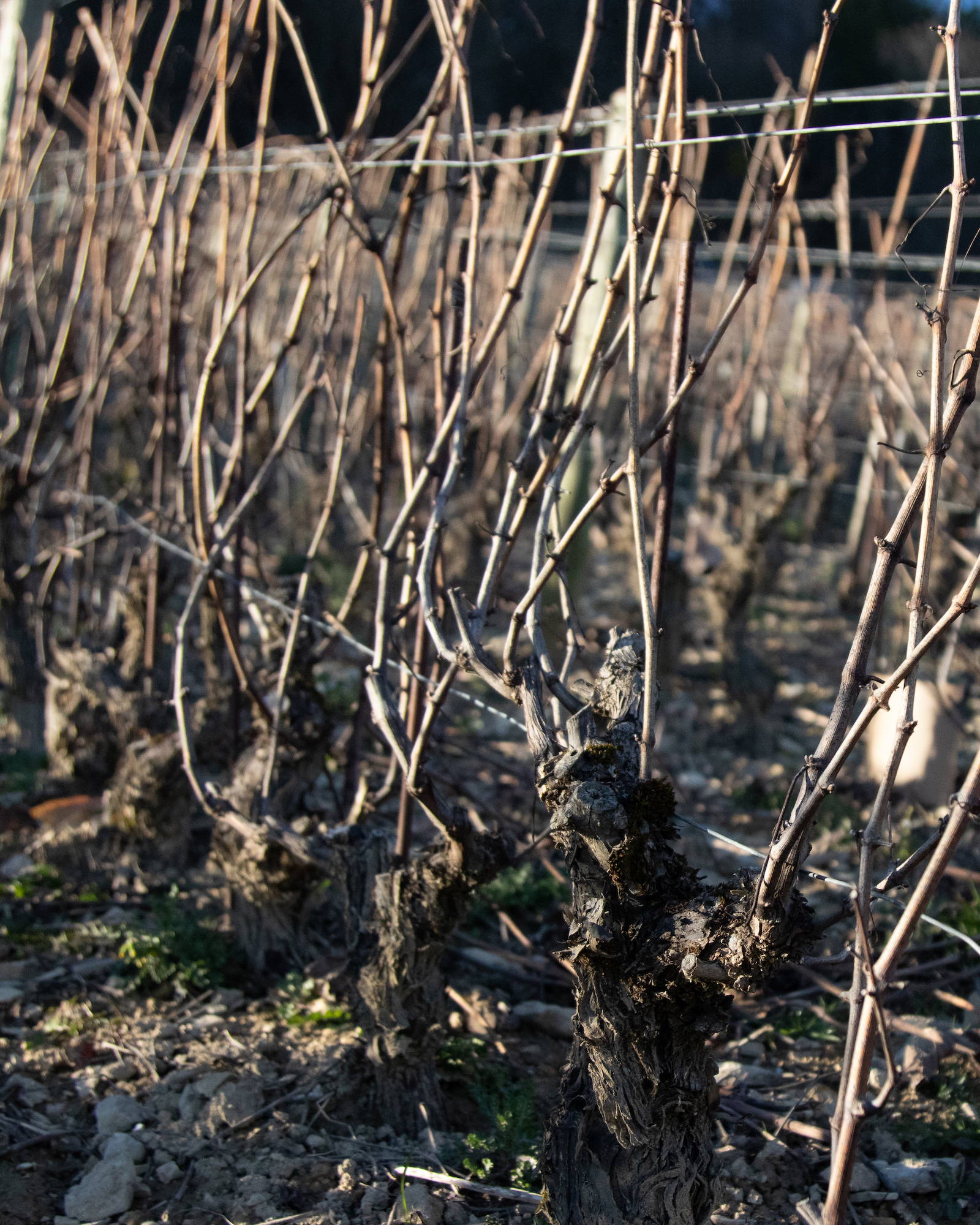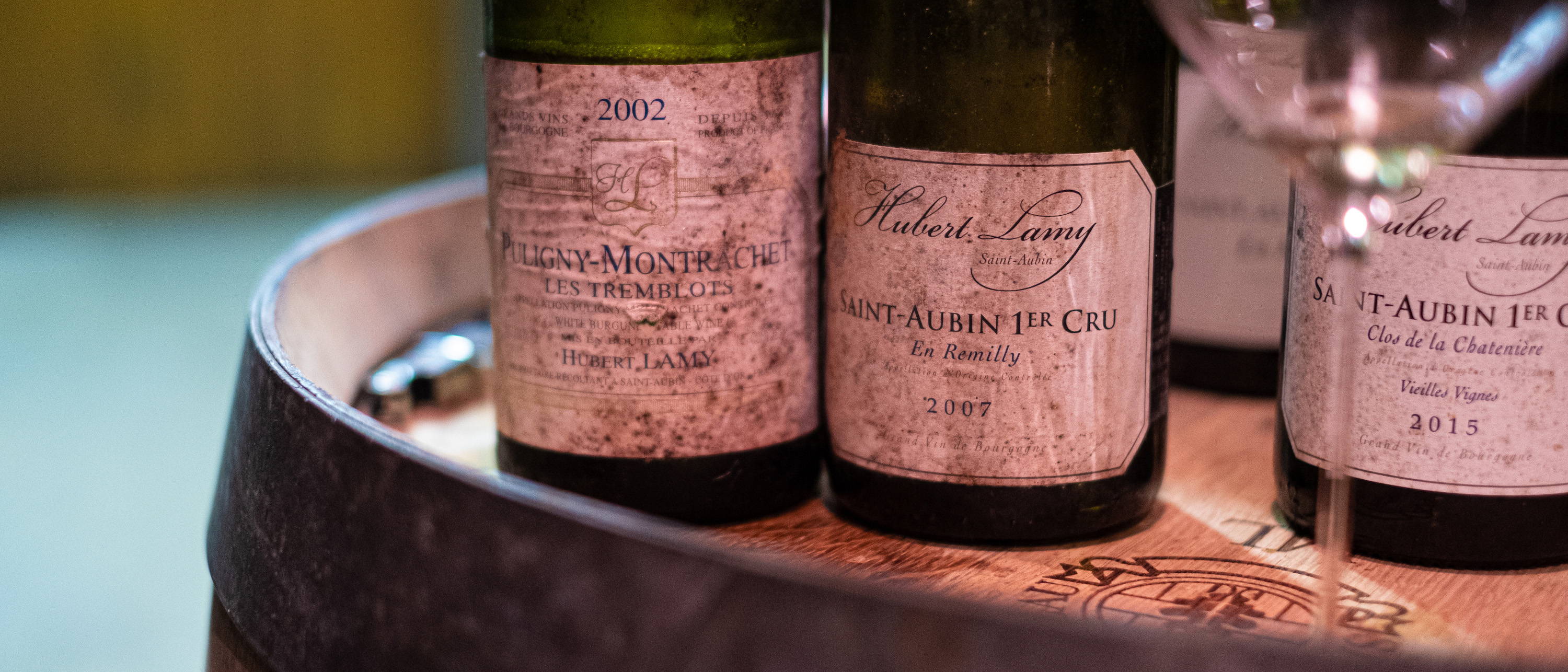HUBERT LAMY
Olivier Lamy
Hubert Lamy created his estate in 1973 using one hectare of Saint-Aubin from his father and some small vineyards he leased from his extended family. After a while, Hubert managed to purchase one hectare of Puligny-Montrachet Les Tremblots, which other growers had overlooked due to its partially uncultivated and partially red-planted land.
By the time his son Olivier joined the family estate in 1995, Hubert had worked tirelessly to expand the estate to achieve 14 hectares of land, with 10 of those being premier cru. During this period, Hubert invested considerable time and resources into replanting the majority of the vineyards with Chardonnay.
Hubert introduced high-density plantations which, despite being initially mistaken, he later discovered resulted in smaller bunches that had a greater taste. In 1995 both father and son decided to replant part of Derrière chez Edouard and Clos du Meix to higher density. Derrière chez Edouard reaching a density up to 30,000 vines per ha while most vineyards in Burgundy are usually at a density of 10,000 vines per ha. Such density added extra labour to the already challenging steep vineyard.


Hubert Lamy created his estate in 1973 using one hectare of Saint-Aubin from his father and some small vineyards he leased from his extended family. After a while, Hubert managed to purchase one hectare of Puligny-Montrachet Les Tremblots, which other growers had overlooked due to its partially uncultivated and partially red-planted land.
By the time his son Olivier joined the family estate in 1995, Hubert had worked tirelessly to expand the estate to achieve 14 hectares of land, with 10 of those being premier cru. During this period, Hubert invested considerable time and resources into replanting the majority of the vineyards with Chardonnay.

It’s important to keep in mind that wines from Saint-Aubin were not easy to sell at that time and unfortunately the increased effort didn’t translate into more expensive wines. Hubert’s work definitely demanded exceptional foresight and a strong belief in the quality of his land.
Olivier took over the family estate full of new ideas and eager to experimentwith them, either in the vineyard or in the cellar.
He was one of the early adopter in the area of the Guyot Poussard vine training system, which involves breaking the trunk into two short arms and lifting the rods upwards instead of along the horizontal axis. This results in more permanent wood on the stump, better resistance to challenging growing conditions, and improved and consistent sap circulation.
Furthermore,Olivier chooses not to trim his vines during the growing season, and instead uses braiding (tressage) as a technique to promote healthy vine growth and fruit quality. Although the amount of work required in the vineyard is substantial, the results achieved in Lamy wines are remarkable, with very low yields per acre, impressive ripening, and higher levels of grape acidity.
This is especially noteworthy given that the Saint-Aubin area historically struggled to fully ripen its grapes. The vineyards are cultivated using organic methods, though they are not certified as such.
Nowadays the estate covers 18.5 hectares in total, with 85% dedicated to Chardonnay and 15% to Pinot Noir. 20 appellations (4 villages, 15 premier cru and 1 grand cru)
In a successful year the estate can average about 100,000 bottles produced per year.
Needless to say that all vineyards are hand harvested.
White grapes are crushed and slowly pressed for long hours using a pneumatic press.
After light clarification grape juice is then transfer to large barrels (350 litres) or demi-muids (600 litres) where it will ferment. A controlled temperature in the barrels and a cold cellar will favour a long alcoholic fermentation with natural yeasts. Wines are bottles after 24 months of ageing and minimal amount of SO2 is used.
Red grapes are sorted at the winery using sorting table.
Depending on the terroir and the vintage profile a proportion of whole bunches ranging from 50% to 100% might be kept. Maceration lasts about 15 days during which period punch downs an pump over are reasonably carried out depending on the vintage profile.
Wines are then put into barrels aged from 1 to 10 years, where Malolactic fermentation usually takes place. After spending 24 months in barrels, the wines are racked in September and then bottled.

“According to writings from the Middle Ages, until the appearance of phylloxera (19th century), vines in Burgundy were cultivated at high density, around 30,000 plants per hectare. This high density was the result of observations and experiments by our ancestors who had found that beneficial competition occurred for the root system, the quality of the grapes, and the wine.”
Olivier Lamy – Domaine Hubert Lamy

Nowadays the estate covers 18.5 hectares in total, with 85% dedicated to Chardonnay and 15% to Pinot Noir. 20 appellations (4 villages, 15 premier cru and 1 grand cru)
In a successful year the estate can average about 100,000 bottles produced per year.
Needless to say that all vineyards are hand harvested.
White grapes are crushed and slowly pressed for long hours using a pneumatic press.
After light clarification grape juice is then transfer to large barrels (350 litres) or demi-muids (600 litres) where it will ferment. A controlled temperature in the barrels and a cold cellar will favour a long alcoholic fermentation with natural yeasts. Wines are bottles after 24 months of ageing and minimal amount of SO2 is used.
Red grapes are sorted at the winery using sorting table.
Depending on the terroir and the vintage profile a proportion of whole bunches ranging from 50% to 100% might be kept. Maceration lasts about 15 days during which period punch downs an pump over are reasonably carried out depending on the vintage profile.
Wines are then put into barrels aged from 1 to 10 years, where Malolactic fermentation usually takes place. After spending 24 months in barrels, the wines are racked in September and then bottled.
REGION OF PRODUCTION
Burgundy
APPELLATION
Saint Aubin, Chassagne Montrachet, Puligny Montrachet, Santenay
FOUNDED
1973
VINEYARD
18.5 hectares
CLIMATE
Continental climate
SOIL COMPOSITION
Clay and limestone
VARIETIES GROWN
85% Chardonnay and 15% Pinot Noir
AGRICULTURE
Organic
































